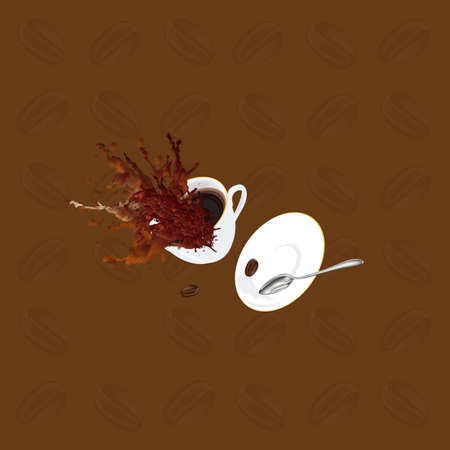Introduction to Cappuccino Art in India
In recent years, cappuccino art has taken the Indian café scene by storm, blending international coffee culture with our own unique desi flair. Walk into any trendy café from Mumbai to Bengaluru and you’ll see beautiful designs—hearts, leaves, even paisley patterns—floating on top of steaming cups of frothy cappuccino. This growing craze for cappuccino art isn’t just about aesthetics; it’s about creating an experience that feels both global and inherently Indian. Cafés are mixing traditional techniques passed down by generations with modern frothing methods, giving customers a taste that is familiar yet refreshingly new. With each sip, patrons aren’t just enjoying their caffeine fix; they’re participating in a cultural phenomenon where East meets West over a cup of perfectly frothed coffee.
Desi Frothing Traditions
When it comes to coffee, India has its own rich and aromatic legacy. Before the wave of global café chains and the rise of modern espresso machines, desi frothing techniques ruled the Indian coffee scene. Walk into any South Indian household and you’ll find the ritual of making filter kaapi, a quintessentially Indian way of enjoying coffee with a thick, creamy layer of froth on top. The method involves decoction brewed in a traditional filter, mixed with hot milk and sugar, then poured back and forth between two steel tumblers. This back-and-forth action is not just for mixing – it’s an art form that creates a foamy head locals lovingly call “froth” or “cream.”
Hand-Beaten Instant Coffee: The North Indian Classic
While South India takes pride in its filter coffee, North India popularised another nostalgic frothing technique: hand-beaten instant coffee. Known as phenti hui coffee, this method involves vigorously beating instant coffee powder with sugar and a dash of water until it turns light and fluffy. Hot milk is poured over this whipped mixture, producing a cup brimming with bubbles and old-school charm. This was the go-to coffee before cappuccino machines entered the Indian market.
Comparing Traditional Frothing Styles
| Region | Coffee Type | Main Frothing Technique | Key Utensils | Cultural Significance |
|---|---|---|---|---|
| South India | Filter Kaapi | Poured between tumblers (dabarah-set) | Steel tumbler & dabarah | Symbol of hospitality; morning ritual |
| North India | Phenti Hui Coffee (Hand-beaten) | Beaten by hand with spoon or whisk | Cup & spoon (or small bowl) | Soulful winter comfort; home-style treat |
The Emotional Connect with Desi Froth
The aroma of freshly brewed filter kaapi wafting through the air or the sight of frothy hand-beaten coffee being passed around during family get-togethers brings back memories for many Indians. These time-honoured traditions are more than just about taste – they’re woven into our daily routines, festivals, and special moments. Even as modern cafés bring international frothing gadgets to the forefront, the charm and nostalgia of desi methods remain unbeatable in every Indian heart.

3. Modern Frothing: Technology Meets Taste
In today’s bustling Indian metros like Mumbai, Bangalore, and Delhi, the café scene is buzzing with a new energy. This transformation can be credited to the arrival of high-tech espresso and frothing machines, which have taken the art of cappuccino making to another level. Gone are the days when a simple hand-whisk or traditional milk pot ruled the scene; now, sleek Italian-style machines stand proudly on café counters, promising both efficiency and consistency.
With the press of a button, these machines deliver perfectly microfoamed milk every single time—something that was once possible only in international coffee chains or five-star hotels. The precision offered by automatic steam wands ensures that every cup has that signature creamy texture loved by desi coffee aficionados. It’s not just about speed; it’s about maintaining quality during rush hours, when young professionals and college students crowd into cafés for their daily caffeine fix.
Moreover, these modern frothers have opened up a world of creative possibilities for Indian baristas. From intricate latte art featuring peacocks and paisleys to experimenting with fusion flavours like masala chai cappuccino or filter kaapi foam overlays, technology is enabling local talent to shine. Customers now expect their cuppa to be Instagram-worthy—a trend that’s become almost as important as taste itself.
The adoption of these high-tech machines also reflects India’s growing global outlook while retaining its unique cultural flavour. Cafés in posh areas like Koramangala or Bandra blend imported techniques with Indian hospitality (think: “bhaiya, ek extra strong wala!”), making each visit an experience that marries tradition and modernity beautifully.
4. Regional Twists & Fusion Froth
When you walk into a café in India, don’t be surprised if your cappuccino arrives with a deliciously unexpected twist! Indian baristas are known for their creative fusion techniques, blending classic frothing methods with desi flavours to craft an unforgettable cup. From the bustling streets of Mumbai to the artsy corners of Bengaluru, cappuccino art is getting a regional tadka (spicy touch) that truly celebrates local culture.
Masala Magic in the Milk Froth
Adding masala (spice mix) isn’t just for chai anymore. Many Indian cafés infuse their frothy milk with a special blend of cardamom, cinnamon, cloves, and sometimes even black pepper. This “masala froth” gives cappuccinos a spicy aroma and flavour profile that makes every sip feel like home. It’s not uncommon to find turmeric or ginger sneaking into the mix too, giving your cup an Ayurvedic boost.
Jaggery – The Sweet Touch
Sugar is passé; jaggery (gur) is in! Instead of regular sugar syrup, some baristas use melted jaggery to sweeten and decorate the foam. Not only does this offer a deep caramel note, but it also brings a rustic charm to your coffee experience—just like grandma’s desserts.
Regional Flavours That Stand Out
| Region | Fusion Ingredient | Signature Flavour |
|---|---|---|
| Kolkata | Nolen Gur (Date Palm Jaggery) | Rich, earthy sweetness |
| South India | Filter Coffee Decoction Swirl | Bold coffee kick with creamy foam |
| Pune/Mumbai | Kesar (Saffron) & Cardamom Dusting | Aromatic floral notes |
| Delhi/UP | Paan Essence | Refreshing aftertaste with herbal hints |
Tadka in Cappuccino Art Designs
The creativity doesn’t end with flavours. Baristas use stencils shaped like mango leaves or paisleys, sprinkle cocoa powder or powdered beetroot for colour, and sometimes even draw rangoli-inspired motifs on the foam. It’s all about making every cup Instagram-worthy while staying rooted in tradition.
This fusion approach means your cappuccino isn’t just about caffeine—it’s a celebration of India’s culinary diversity and artistic spirit in every sip!
5. The Latte Art Craze: From Doodle to Devotion
If you scroll through Instagram these days, you will surely notice an explosion of cappuccino and latte art reels from Indian youth. Gone are the times when coffee was just a humble filter kaapi or a quick Nescafé at the corner tapri. Today, the scene in college canteens and hip urban cafés is nothing less than a creative mela. Youngsters in Bengaluru, Mumbai, and even smaller cities like Indore are proudly sharing their latest “coffee art” – from simple hearts to intricate peacock designs, all created with frothed milk and a steady hand.
From College Canteens to Instagram Fame
What started as casual doodling on cappuccinos during free periods has now become a full-fledged trend. Students compete to see who can make the best “latte Rangoli,” with judges being their friends and social media followers. Many college canteens have upgraded their coffee machines, offering better frothers so that students can perfect their skills. Even chai-loving crowds are curious, often joining in just for the fun and “Insta-worthy” pictures.
Coffee Art as a Social Connector
For Indian youth, cappuccino art is more than just a hobby—it’s a way to bond. Cafés host weekend latte art workshops where friends gather after tuitions or office hours. These events are filled with laughter, friendly competition, and endless clicking of photos for WhatsApp statuses. It’s also common to see “latte art challenges” on social media platforms like Instagram Reels, where hashtags like #IndianCoffeeArt and #DesiLatteLove are trending.
Global Inspiration, Local Flavour
While global trends inspire Indian baristas and college students, there’s always a unique desi twist—think paisley patterns, lotus motifs, or even Bollywood star faces crafted atop your morning brew. This blend of tradition and modernity has made cappuccino art not just an aesthetic pursuit but also a celebration of Indian creativity. In this way, cappuccino art serves as both a fashionable trend and a cultural bridge between India’s rich heritage and contemporary lifestyles.
6. Barista Tips: Desi Style Cappuccino Art at Home
Easy Frothing Hacks for Indian Kitchens
Don’t have a fancy coffee machine at home? No worries, yaar! Creating café-style froth is possible with basic kitchen tools found in almost every Indian household. Just grab a small steel dabba (container) or a mason jar, pour in hot milk, close the lid tightly, and shake it up and down vigorously for about 30 seconds. Open it carefully—voila! Frothy milk ready to top your homemade cappuccino. If you want to go old-school, use a hand whisk or even a traditional wooden mathani (churner); both are perfect for whipping up that thick desi foam.
Adding an Indian Touch to Your Cappuccino Art
Now, let’s bring some real Indian tadka to your cappuccino art! After pouring the frothy milk onto your espresso or strong instant coffee base, sprinkle a pinch of cinnamon (dalchini), cardamom (elaichi) powder, or even cocoa on top. If you’re feeling creative, use a toothpick or skewer to draw simple patterns—like paisleys or dots—right over the foam. For a truly local twist, garnish with a few strands of kesar (saffron) or crushed pistachios. This not only adds flavour but also gives that royal Indian café vibe at home.
Desi Pro Tip: Malai Magic
If you love rich textures like us Indians do, try using fresh malai (cream) instead of plain milk for frothing. It gives your cappuccino an extra creamy body and is perfect for those chilly mornings when you crave something indulgent.
Celebrate With Family & Friends
Remember, making cappuccino art at home is all about experimenting and sharing good vibes. Invite your friends over for chai-coffee time and show off your new skills. Nothing beats sipping on desi-style cappuccino while gossiping over Bollywood movies or cricket matches!
7. Conclusion: Brewing the Indian Cappuccino Identity
As we reach the end of our aromatic journey through the art of cappuccino frothing in India, it becomes clear that our cafés are not just serving a beverage—they are crafting an experience that beautifully blends tradition and modernity. From the legacy of hand-beaten coffee, fondly known as phenti hui coffee, to the adoption of high-tech frothers and latte art inspired by global trends, Indian baristas are redefining what it means to enjoy a cup of cappuccino. This unique blend reflects our desi spirit—adapting international methods while proudly holding onto our roots. Whether you sip your cappuccino at a bustling Mumbai café or a cozy spot in Bangalore, you’ll find that every cup carries a story: of innovation, nostalgia, and community. As young Indians embrace café culture, experimenting with both traditional jugs and imported steamers, we see not just a drink but a celebration of creativity and cultural fusion. In this way, the Indian cappuccino identity is being brewed afresh every day—rich with heritage, yet bold enough to explore new horizons. The next time you raise your cup, remember: you’re not just tasting coffee; you’re experiencing the evolving soul of India’s café scene.


